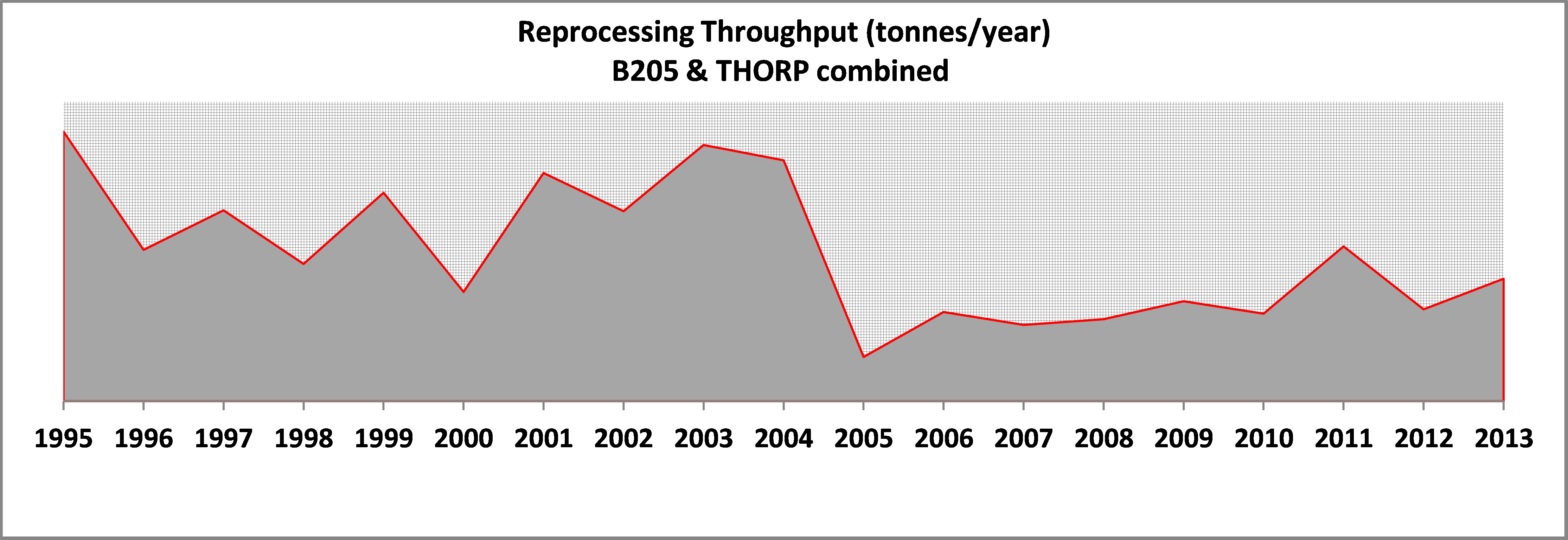Sellafield’s ongoing failure to meet its obligations to an international Strategy is the subject of a CORE critique submitted to OSPAR’s recent Radioactive Substances Committee meeting. CORE’s investigation has revealed that the UK and Sellafield have repeatedly failed to comply with the principal objectives of the Strategy – the ‘progressive’ and ‘substantial’ reduction of discharges from Sellafield’s B205 (magnox) and THORP (oxide) reprocessing facilities.
Along with other European governments, the UK signed up in 1998 to the Strategy designed by the OSPAR (Oslo/Paris) Commission to protect and conserve the North East Atlantic maritime region. Sellafield’s failure to date to meet the discharge reduction objectives has significantly threatened the Strategy’s ultimate aim of ensuring that, by 2020, levels of radioactive substances in the sea are ‘close to zero’ above historic levels.
CORE’s spokesman Martin Forwood said today:
‘Sellafield’s failure, aided and abetted by successive UK Governments, makes a mockery of the corporate claim that environmental stewardship is a core value of the company, and we await a response to our findings from the UK Government’s Head of Delegation to OSPAR’s committee meeting last week. We have also warned OSPAR that, for its Strategy to retain any shred of credibility, it needs to get a grip on those who fail to comply and, contrary to claims in its most recent report, acknowledge the routine breaches by the UK and Sellafield’.
OSPAR’s most recent report the Fourth Periodic Evaluation was published by its Radioactive Substances Committee in October last year. Assessing Sellafield’s discharges between the period 2007- 2013 and comparing them with those from 1995 onwards, the report concluded that ‘no assessments of contracting parties showed any evidence of any increase in discharges.
That claim is roundly debunked by CORE whose investigation has found that, as a Contracting Party, the UK has overseen multiple increases of discharges from Sellafield over the years, including the 2007-2013 period covered by the recent OSPAR publication. The main findings of CORE’s report are that:
• Sellafield’s reprocessing discharges, driven largely by commercial interests, have routinely breached the principal discharge reduction objectives of the Strategy and will continue to do so until the end of reprocessing around 2020.
• OSPAR has failed to censure the UK – as a contracting party – for non-compliance with and lack of commitment to the Strategy.

The graphic shows that, contrary to the ‘progressive’ discharge reduction required by the Strategy, Sellafield’s reprocessing throughput (tonnes of spent fuel/year) has fluctuated widely in ‘yo-yo’ fashion since 1995 – with correlated fluctuations in discharge. As has been pointed out to OSPAR, the only ‘substantial’ reduction (2004/05) shown in the graphic resulted from the major accident that closed THORP for almost three years and that, since that event and for the 2007-2013 period of OSPAR’s Fourth Periodic Evaluation, discharges are again on the rise to further compromise the prospect of meeting the 2020 ‘close to zero’ target.
The risk of missing that target was recognised a decade ago by Sellafield and the Nuclear Decommissioning Authority (NDA) when both were advocating that the then predicted end of reprocessing around 2012 would allow a number of years – a clear breathing space – for the radioactive substance levels to reduce/decay to close to zero by 2020.
But as a result of poor plant performance, the subsequent extensions of reprocessing and its discharges – THORP to 2018/19 and B205 to 2020 – has removed any remaining breathing space. Such an outcome was recognised by the NDA in 2010 with the suggestion to ‘move to a contingency plan – i.e. agree not to meet OSPAR deadline (emphasis added) or put in place a different strategy’. The suggestion epitomises the apparent disdain of officialdom towards the Strategy.